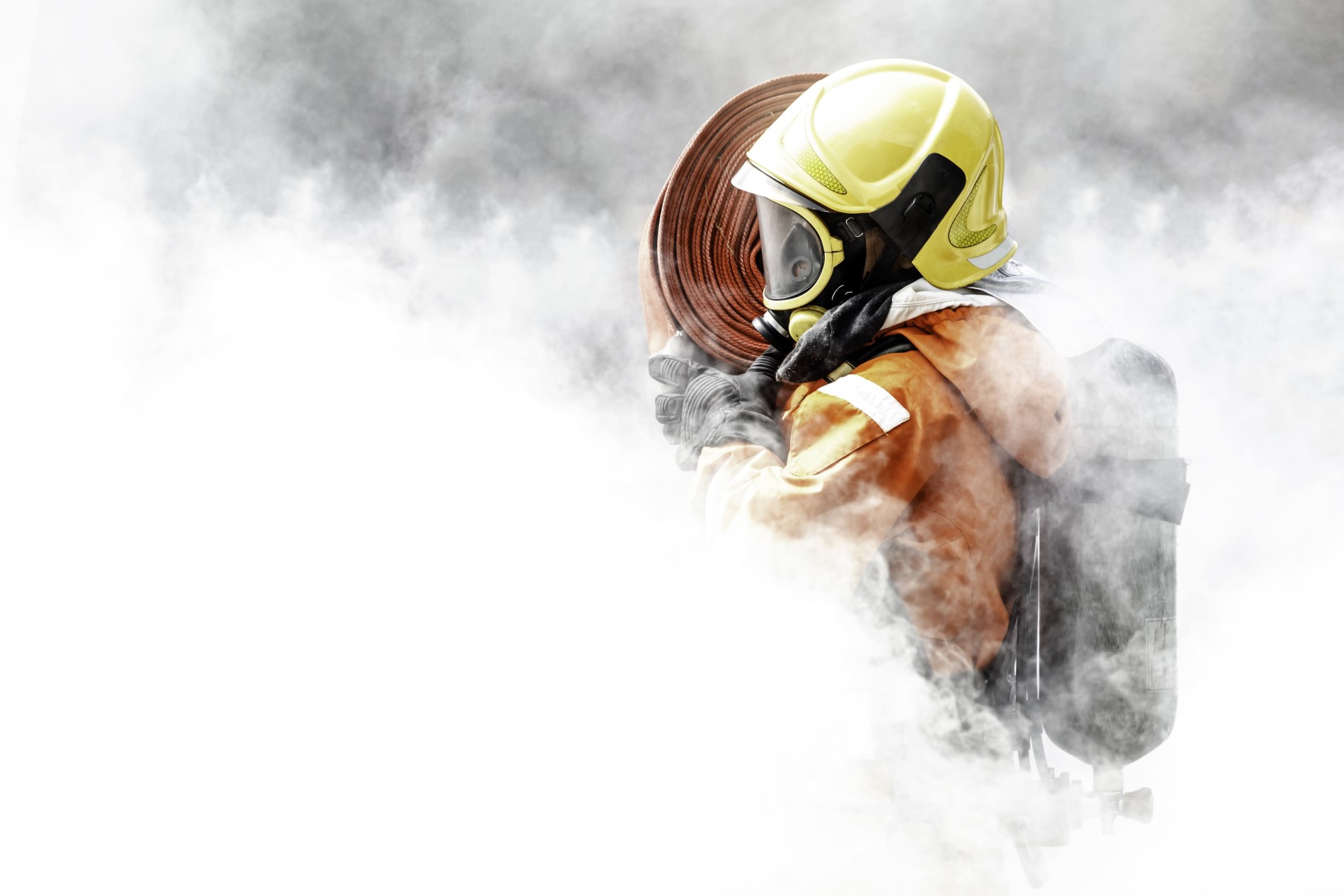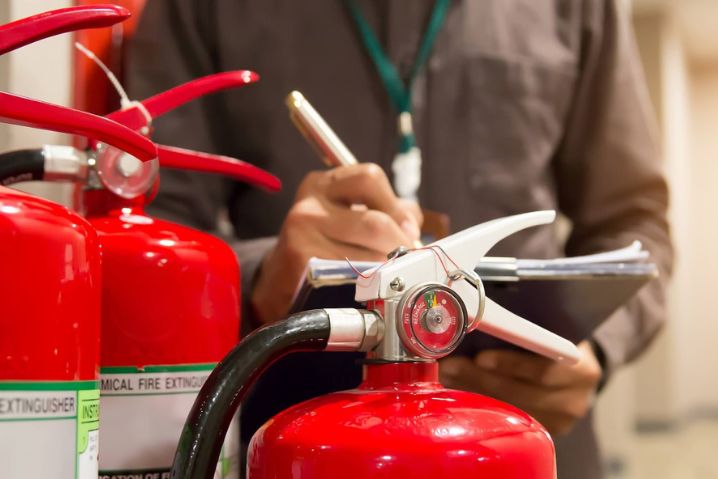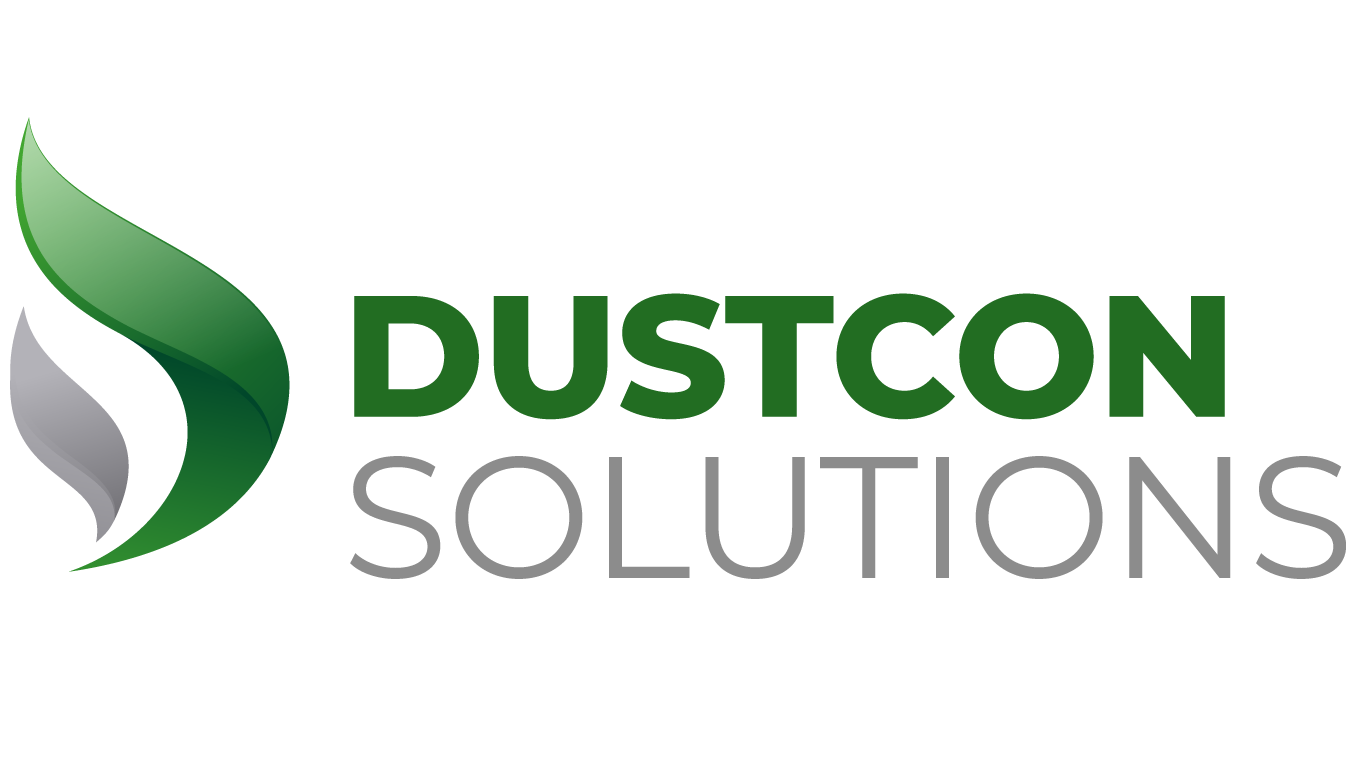

Dealing With Dust Explosion Hazards
When dry powder particles that are electrostatically charged are applied to objects that are conductive and electrically grounded, and heat is then applied to enable the powder to adhere to the object, the process is referred to as powder coating. Pigment and electrically insulating resin are typically used to create materials for powder coating. Powder coating is more beneficial than paint because the finish is more durable and over-sprayed powder can be reused. Powder coating is commonly used in various industries today, such as construction, automotive, as well as appliances.
Powder coating does have one con- the powders used are typically explosible. When such powders get dispersed in the air around a source of ignition, it could lead to a dust explosion. It can be expected that a dust cloud of explosible nature would form during the operations of powder spraying as well as within systems of downstream dust collections. The presence of a source of ignition could lead to an explosion or a dust deflagration. Static sparks that emerge from metal objects undergoing coating are often a source of ignition during powder coating. Precautions must be undertaken to regulate risks in order to safeguard contractors, the public, employees, as well as the plant from the implications of disasters.
In the last few years, several standards and regulations were set up by the National Fire Protection Association to facilitate the safety efforts of the industry to evaluate and manage both explosions and dust fires. Despite the utility of the publications, there is some level of ambiguity surrounding their requirements in terms of reliability and applicability.
In the Standard on the Fundamentals of Combustible Dust, also referred to as the NFPA 652, the best practices for combustible solids were outlined, regardless of the industry and the type of dust or powder.
Appropriate standards based on the industry or commodity are also dictated by NFPA 652. According to NFPA 652, the appropriate standard is NFPA 654 for the powder coating industry.
The 2019 edition of NFPA 652 will be discussed along with pragmatic solutions for regulating and preventing the hazards of dust flash fire and explosion, which are common when processing, storing, and handling combustible powders.
Factors that Can Cause Dust Cloud Flash Fires and Explosions
If the following conditions exist at the same time, flash fires from dust clouds might occur:
- A cloud formed by a combustible powder whose concentration exceeds Minimum Explosible Concentration (MEC). Note that the dust content must be adequate and the particle size small enough to facilitate the propagation of a flame.
- An adequate amount of oxidant, which is typically provided by the air’s oxygen.
- A source of ignition that has adequate energy.
The first two conditions are usually present during the process of handling, transferring, mixing, or collecting powders or dusts. A dust cloud flashfire may occur if a source of ignition also emerges simultaneously. The occurrence of the ignition within a building or a room or a process vessel that is enclosed would build up pressure that can rupture the surrounding boundary to result in a dust explosion.


NFPA 652 Criteria
NFPA 652 has the following objectives to mitigate the propagation of a fire or an explosion, ensure the safety of life, and facilitate the continuity of a mission:
- To provide reasonable safeguards for the protection of individuals who are not in the immediate vicinity of the source of ignition to mitigate the effects endured and provide adequate time to shift, flee, or find safety;
- To the extent possible, prevent explosions and flash fires from causing serious injury;
- Provide protection to proximal buildings as well as the public from the consequences of an explosion or a flash fire;
- To mitigate damage to the extent that the current capabilities in terms of production and operation of the plant align with the owner or operator’s expectations;
- Prevention or mitigation of explosions as well as fires that may lead to the failure of nearby structures, including enclosures, buildings, storage areas, or emergency life-saving systems.
The operator or owner of any facility that might have combustible dusts must adhere to the following obligations as per NFPA 652:
- Materials’ explosibility and combustibility (Go/No-Go) should be determined. Here, information is only provided that conveys if a dust can burn or is combustible and deflagrate or is explosible if all the aforementioned conditions are met. The ease with which it may undergo ignition as well as the explosion’s severity are not determined. To determine this, NFPA 652 allows the representative samples to be analyzed in a laboratory, wherein the representative samples are chosen from the process or historical data of the facility or other data that are published. The data must, however, represent up-to-date processes and materials. A facility may also choose to assume a material is explosible, in which case, laboratory analysis is not required. But the absence of prior incidents does not qualify as a reason to claim that a particular material is not explosible or combustible.
- Dust Hazard Analysis (DHA) is a methodical assessment that helps find and assess hazards that could possibly lead to explosions, dust fires, as well as flash fires if a facility employs, processes, or handles powder that is explosible or combustible. An individual with expertise in dealing with combustible particulate solids and their hazards must conduct a DHA.
- While existing facilities should have completed the DHA by September 2020, in the case of upgrades or new constructions, where the modifications’ costs exceed 25% of the original, DHA is necessary. Lastly, a review is necessary once in five years.
- Controlling fires, flash fires, and explosions. A facility’s owner or operator must regulate any hazards that could cause flash fires, fires, or explosions through the design of the building and the equipment, source of ignition, use of personal protective equipment, housekeeping, regulating dust, preventing explosions, and providing protection.
The authority having jurisdiction (AHJ) may accept a documented risk assessment as an alternative to the prescriptive requirements of NFPA 652 when determining the level of design and protection features for the building, equipment protection, ignition source control, and explosion protection.
- Documented safety management systems should be in place. According to NFPA 652, a written management system must be established by the operator or the owner with respect to the facility and equipment operation to avoid or minimize explosions, fires, and flash fires. Such systems incorporate operating procedures, training requirements, investigation of incidents, and the participation of employees. Existing and new processes and facilities must adhere to the criteria outlined in a written management system.
Commitment to compliance
There are various methods you can undertake to manage hazards pertaining to explosions and dust cloud flash fires:
- Collect data. Instead of literature sources, your facility’s representative samples must be tested to ensure precise and accurate data. Powder that is over-sprayed and recycled typically demonstrates a higher sensitivity towards ignition sensitivity and the properties of explosion are more severe when compared to virgin powder because the particle size is smaller. Powder coating applications typically require the following tests or data:
Explosibility Screening (Go/No Go) – ASTM E1226.
If Explosible (Go), then:
Ease of Ignition?
Minimum Ignition Energy (Dust Clouds) – ASTM E2019
Minimum Ignition Temperature (Dust Cloud) – ASTM E 1491
Minimum Ignition Temperature (Dust Layer) – ASTM E2021
Thermal Instability
Explosion Effects?
Maximum Explosion Pressure – ASTM E1226
Maximum Rate of Pressure Rise – ASTM E1226
Controlling Flammable Concentrations?
Minimum Explosible Concentration – ASTM E1515
- Explosible dust clouds should be prevented or regulated. On equipment that facilitate processing as well as spray booths, dusts tend to accumulate occasionally, which could cause serious disasters, including dust explosions of primary and secondary degree. Effective housekeeping is necessary to mitigate the levels of dust accumulating in a facility.
- Removing or regulating sources of ignition. It is crucial to identify sources of ignition that may exist or may emerge during drastic scenarios, following which, they must be regulated. There are several common sources of ignition, such as sources of heat, electrical arcs and sparks, sparks from impact and friction, as well as electrostatic discharges. If the goal is to mitigate such sources, it is necessary to take the following steps:
- Conductive items like metals should be electrically grounded. In case metal makes up the entire grounding system, the continuous ground paths must witness resistance whose value is under 10 ohms.
- A grounding system is necessary for operators working in flammable atmospheres that may contain explosive dust clouds or any flammable atmosphere wherein the value of the Minimum Ignition Energy (MIE) is less than 30mJ. For the control and dissipation of static charges, operators must wear static dissipative footwear, while the flooring must also be conductive or static dissipative, wherein the resistance falls between 1 Mega ohms and 100 Mega ohms.
- In areas with explosible atmospheres, devices that are properly rated should be used. This is only possible when a Hazardous Area Classification is conducted in line with the criteria listed in the National Electrical Code (NFPA 70). The specific Article (500) helps prevent the creation of a source of ignition from the electrical equipment.
- The plant should be inspected and maintained regularly to prevent mechanical failure.
Safeguarding from the effects of an explosion. In case the risks of dust cloud explosions cannot be decreased by employing preventive measures for explosions, it is necessary to consider protection measures as well. This should be done in addition to undertaking the required steps to minimize the possibility of the propagation of dust clouds, while also eliminating potential sources of ignition. Some Explosion Protection measures are:
- Venting explosions to safe areas in line with NFPA 68: Guide for Venting of Deflagrations.
- The injection of a suppressant to suppress explosions as per NFPA 69: Standard on Explosion Prevention Systems.
- A construction that is explosion-resistant to contain the spread (Design based on ASME Boiler and Pressure Vessel Code, Section VIII, Division I).
- Isolating explosions through chemical or mechanical means in order to mitigate the possibility of the propagation of deflagration among work areas and equipment that are connected.
Conclusion
It is imperative that powder coating operations evaluate and manage the hazards associated with dust deflagration and explosion by undertaking the following steps:
- Evaluation of the explosive properties of dust(s).
- Analyzing your operations and processes.
- An assessment of the hazards caused by dust flash fires and explosions
- Assessing areas that could witness explosive dust clouds under normal and abnormal conditions.
- In normal and abnormal circumstances, the identification of possible ignition sources.
- Identifying safety measures that work and evaluating their effectiveness.
2. Protective measures and methods of isolation.
- Programs for safety management that are documented for future use.
- Regular inspections and maintenance should be performed on equipment and facilities.


6 Industries Added by OSHA to the Combustible Dust NEP Program
n late January 2023, a new version of the Combustible Dust National Emphasis was issued by the Occup


Ensuring the Safety of Facility Through Dust Explosion Test Data
“Could it be a problem if my powder has demonstrated 3mJ of minimum ignition energy and 256 bar.m/


Electrostatic explosions and fires: Prevention
All of us, at some point, experienced electrostatic shocks. This may be at home, at a store, when pr






